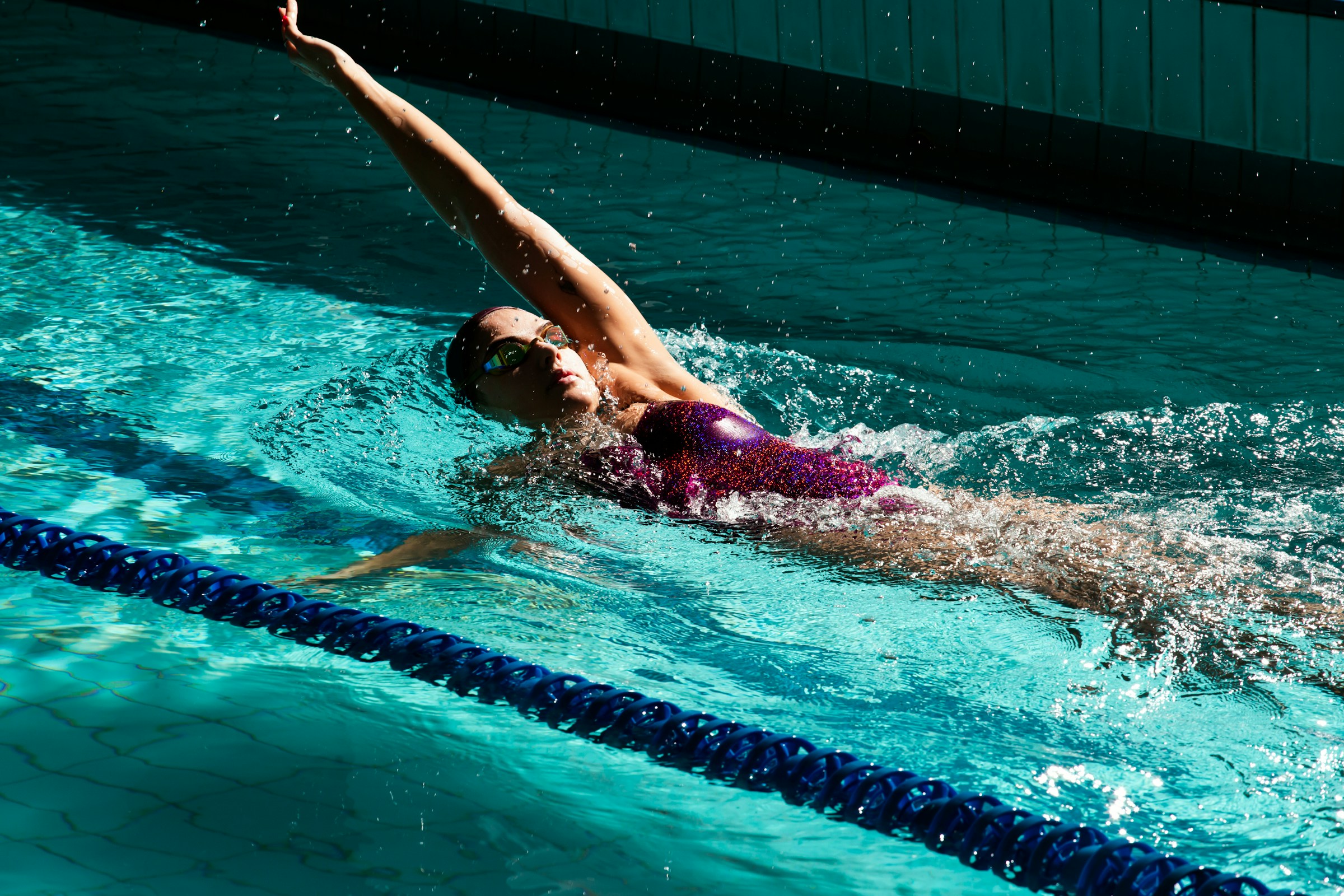Swimming is a full body engine that runs quietly, and that quiet power is precisely why it suits busy people who want durable fitness without a lot of fuss. In the water, resistance surrounds you from every direction. Each pull and kick turns into both strength and cardio at the same time, so a single session gives you more stimulus than most land based workouts with far less wear on the joints. Your hips, shoulders, and spine move through long arcs while your heart rate climbs into a steady zone. That combination of range, rhythm, and resistance is the core advantage of the pool.
Heart health responds especially well to the continuity of swimming. Strokes are rhythmic by design, so you naturally hold a sustainable pace for minutes on end. As you roll and reach, you breathe on a simple cycle. You inhale the instant your mouth clears the surface and exhale under the water. The pattern is calming, and it trains the heart to push more blood per beat while keeping ventilation controlled. Many swimmers notice that the pool turns down mental noise. There is no phone to check and no playlist to adjust, only the line on the floor and the turn at the wall. When the set is done the mind feels quieter than when it began, as if the white noise of bubbles has pressed a soft reset.
Strength gains arrive without the strain that heavy external loading can bring. Air offers almost no resistance. Water offers a lot. Front crawl and backstroke ask the lats, delts, triceps, and deep core to pull through a dense medium on every stroke. Breaststroke brings the adductors and glutes into the story. A few rounds of kicking with a board will light up the quads and hip flexors. Because the load is evenly spread and the body is horizontal, the risk of dumping too much stress into a single joint is lower than in many other sports. It feels like smooth work rather than grinding work, which makes it easier to come back again in two days.
Joints and connective tissue appreciate the buoyancy. On land, body weight compresses knees and spine with every step and jump. In the pool, that compression falls away and the body can move longer with less payback. People who struggle with plantar fasciitis, runner’s knee, or stiff lower backs often extend their training volume when they switch a few days to water. Shoulders and hips cycle through ranges many of us rarely reach while sitting at a desk. Gentle rotation through the torso releases the stiffness that sneaks in during long hours of typing and driving. Mobility improves in the same session that the heart and muscles are working, which is efficient and satisfying.
Mental fitness is the quiet theme running through good swim habits. A pool strips away distractions. There is a count, a clock, and a lane. The repetition encourages focus, and focus becomes a kind of moving meditation. You start to respect the steadiness of effort because the lap clock tells the truth. Even pacing begins to feel like a life skill rather than just a sport skill. The same trait shows up at work when you stop swinging between frantic sprints and total stalls. You produce solid work more often because your body and brain have practiced sustainable tempo.
Weight management responds to routine more than it responds to heroics. Swimming supports routine because it is gentle on the body while still being demanding enough to create change. You can train when your feet are sore from running, when the heat outside is oppressive, or when your back is tired from sitting. That means fewer missed workouts across a month. A moderate effort repeated often usually beats a hard effort that knocks you out for days. Appetite can feel unusual after long sessions in cool water, so it helps to plan a simple protein rich meal soon after the swim to avoid snacking your way through the evening.
Swimming is also an excellent partner for other sports. The aerobic base you build in the pool carries to cycling and running. The shoulder control you gain from bilateral breathing pays off when you press or pull overhead in the gym. Learning to hold a pace for a whole set rather than sprinting and fading teaches patience and energy management, two qualities that make every other kind of training more productive. You may find that your long ride feels smoother and your easy run feels easier once the pool becomes a regular date in your week.
Starting is simpler than most people think. You do not need much gear, only a comfortable suit, a cap if your hair needs taming, and goggles that do not leak. Short sets with generous rest are still effective because the water itself does the loading. If freestyle feels hard, rotate strokes or tuck a pull buoy between your thighs to reduce drag from the legs while you focus on the catch. If you feel breathless, slow the stroke rate and commit to a full exhale under the surface so the next inhale can be easy. Technique lessons help at any age, and small fixes like a higher elbow in the pull or a more relaxed head position can transform the experience in a few sessions.
Safety is the rule that makes all the other benefits possible. Swim in a supervised pool or bring a buddy for open water. Warm up your shoulders with easy lengths before you try to hold a faster pace. Skip breath holding games, since hypoxic drills belong in advanced plans with a coach who can watch you. Drink water even in the pool, because sweat is easy to ignore when you are surrounded by it. Rinse off after to keep skin and ears happy. Those simple habits keep the path clear for long term progress.
A good routine for a busy week blends technique, strength, and steady aerobic work without asking for extreme effort. Imagine three pool visits on nonconsecutive days. The first session shows your brain how the stroke should feel. Start with easy mixed lengths to warm up, then swim short repeats at a pace that allows a calm exhale at the wall. The second session emphasizes strength by adding a pull buoy and, if you have them, paddles for a few sets, followed by controlled kicking with a board. The third session explores tempo with longer repeats that teach you to breathe every three strokes and hold form even as the heart rate climbs. If the weekend allows, a gentle recovery swim with mixed strokes restores range and mood. Progress by adding a repetition each week or by trimming rest a little, not both at once, and take a lighter week every fourth week to let skill catch up to ambition.
Land based strength work supports the stroke without stealing energy from it. Two short sessions a week focused on rows, assisted pull ups, face pulls, and core stability will protect posture and balance the shoulders. Keep the reps moderate and the form crisp. The goal is good positions, not burnout. Mobility work for the thoracic spine and ankles reduces drag and helps your kick find a natural rhythm. These accessories make the water work pay off faster.
Recovery turns good training into actual improvement. A cool rinse after the swim soothes the skin. A simple meal with protein and carbohydrates within an hour helps repair tissue and restock energy. Seven to nine hours of sleep gives the nervous system time to settle. A little stretching for the chest and lats reopens the front of the shoulders so tomorrow’s posture starts in a better place. If you notice tight traps in the morning, your head is probably lifting too high for air. Address the technique before you pile on more distance.
The real magic of swimming is how well it fits into imperfect weeks. A ready bag with suit, cap, goggles, and a small towel removes decision friction. A regular lane time turns a hope into an appointment. Small, repeatable wins beat elaborate plans that collapse at the first sign of a busy day. The water rewards consistency more than talent. You show up. You move well. You leave calmer than you arrived. Over months that steadiness builds a stronger heart, better joints, a quieter mind, and a body that handles life with more grace. The benefits of swimming are not loud, but they are deep. Build a simple system that keeps you near the pool, and let time multiply your effort.












-7.jpg&w=3840&q=75)


